You don’t have to spend much time in downtown Skopje to notice the city has a lot of statues. And when I sat a lot, I mean heaps. Literally hundreds. Whoever was in charge of Skopje’s Statue Department clearly took the ‘more is more’ approach to their portfolio. I’m not sure how many statues stood in the city prior to the Skopje 2014 project (so named because it began in 2010) which saw the installation of a further 34 monuments and 39 sculptures, but the amount of bronze around town is truly staggering.
One statue you definitely can’t miss is the enormous horseman on an enormous horse, mounted on an enormous podium in the middle of town. The commissioning and installation of this piece was controversial. First, you have to spend a lot of euros, over eight million to be ‘exact’, to create a statue this enormous. Macedonia’s wallet is a little on the slim side, and spending big coin on a big statue raised (and still raises) a lot of questions. The other issue was that the statue is arguably something of a touchstone in North Macedonia’s relations with its southern neighbour, Greece.

You see, back when Yugoslavia dissolved, the new nation now known as North Macedonia decided to call itself Macedonia.
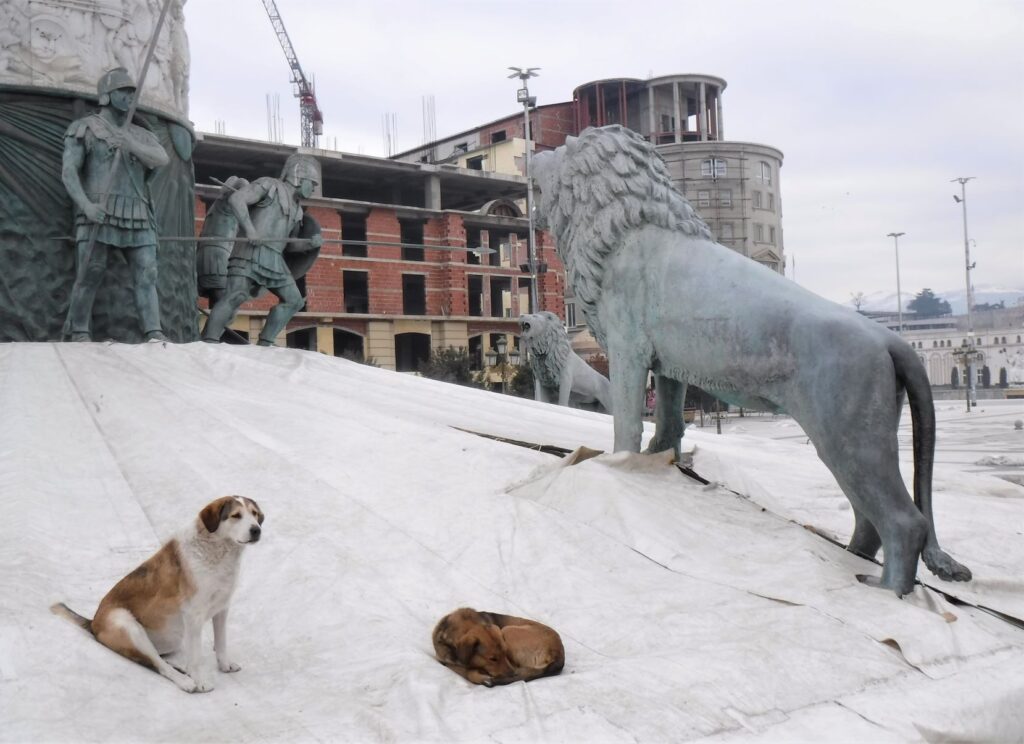
Greece got the shits up about it, as according to them the name Macedonia refers to the north-eastern part of Greece, not to some jumped-up Johnny-come-lately nation that used to be the southern bit of Yugoslavia.
The Skopje street dogs found the statue a comfy spot, and couldn’t give a crap about the name controversy
In fact, so shitted off were the Greeks that a 26 year long blue* erupted over the name, with Greece blocking Macedonia’s applications to join the EU and NATO over the issue. This was finally resolved in 2019 when Macedonia agreed to add ‘North’ to their name.
Anyway, back to the statue. Greece considers Alexander the Great as a national hero of theirs, and they are not prepared to share. So when the new nation next door decided to install a stonking great statue of Al in Skopje, it just added fuel to the culture-war fire.
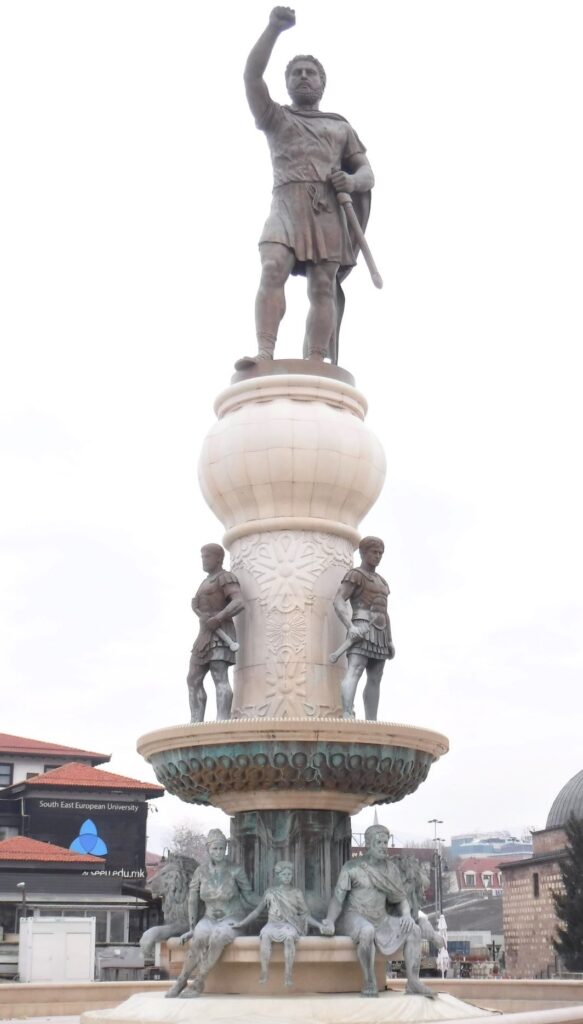
The Macedonian Government of the time asked, whilst sniggering behind their hands, why the Greeks had their foustanellas in a twist over a statue with the wholly innocent and unprovocative name ‘Equestrian Warrior’?
Adding insult to Greek injury, on the other side of the Varder River, the Macedonians put up a massive statue of Phillip of Macedon. Phil is Alexander’s old man, and in a similarly disingenuous move the Macedonian’s named the piece ‘Warrior with accompanying elements’. Nice one.
Philip of Macedon’s bodyguards were fierce despite their diminutive size

At level one off this three-story sculpt fest is a family portrait of Phil, his wife Olympia, and a young Alex when he just Alexander, having yet to become Great.
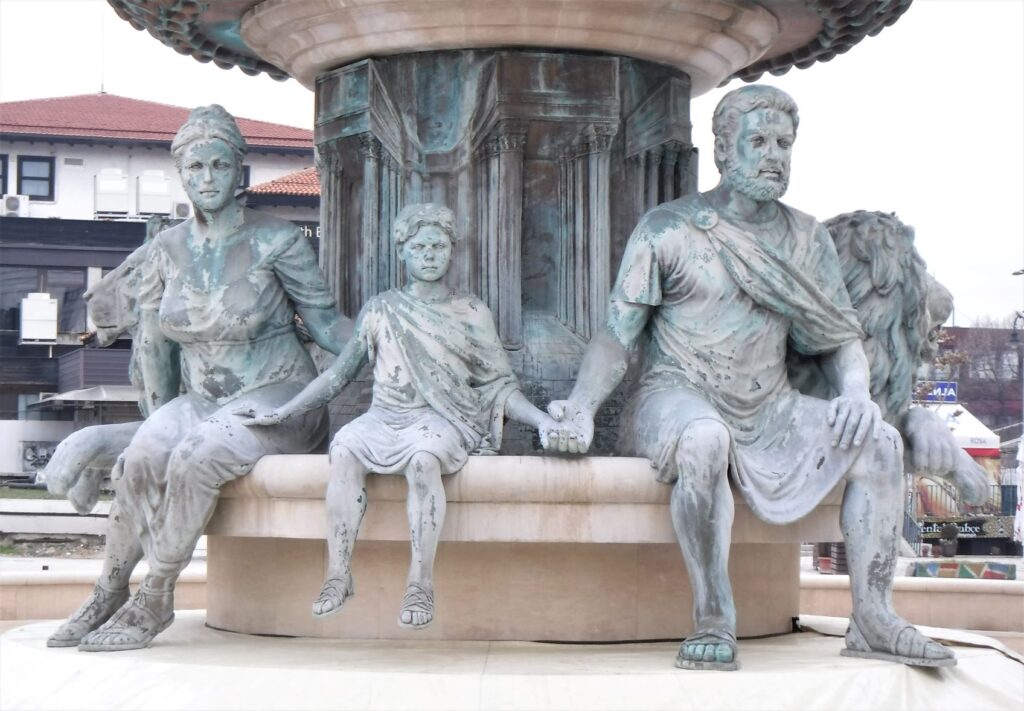
Despite already having at least four city bridges spanning the Varder River along a length of less than one kilometre, in the early 2010s the government decided to build a couple more. Presumably this was to provide more space to install more statues. And install they did.
One statue that isn’t controversial is this one of Mother Theresa, who was born in Skopje in 1910
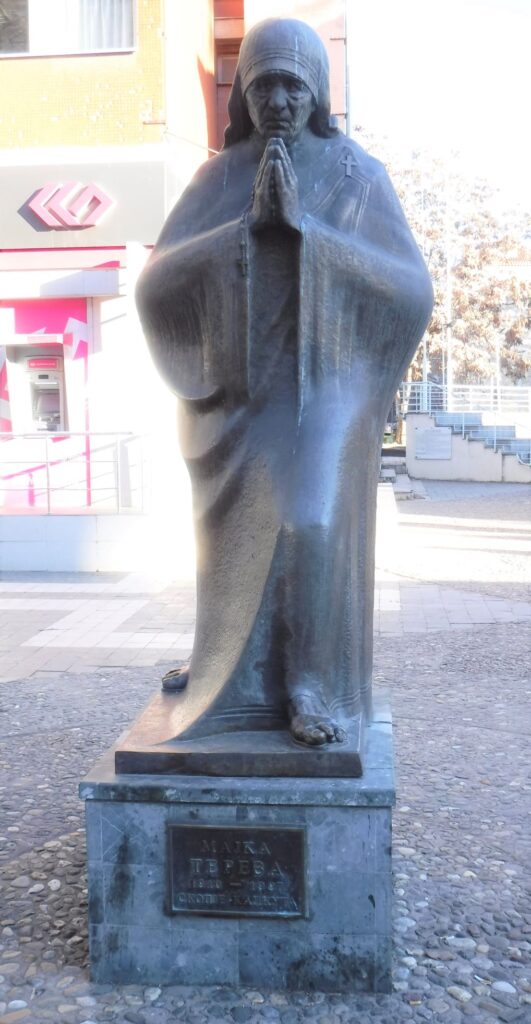
This one is called the Bridge of Civilisations. According to the Skopje 2014 project: ‘The sculptures on the…bridge… represent historic figures from different epochs whose relics lie on the soil of the Republic of Macedonia and whose life’s work has left a mark on this region’. Considering the number of statues on the bridge, 28 in total, it appears that every historic figure from ancient kings to the bloke who emptied the dunnies has been included.
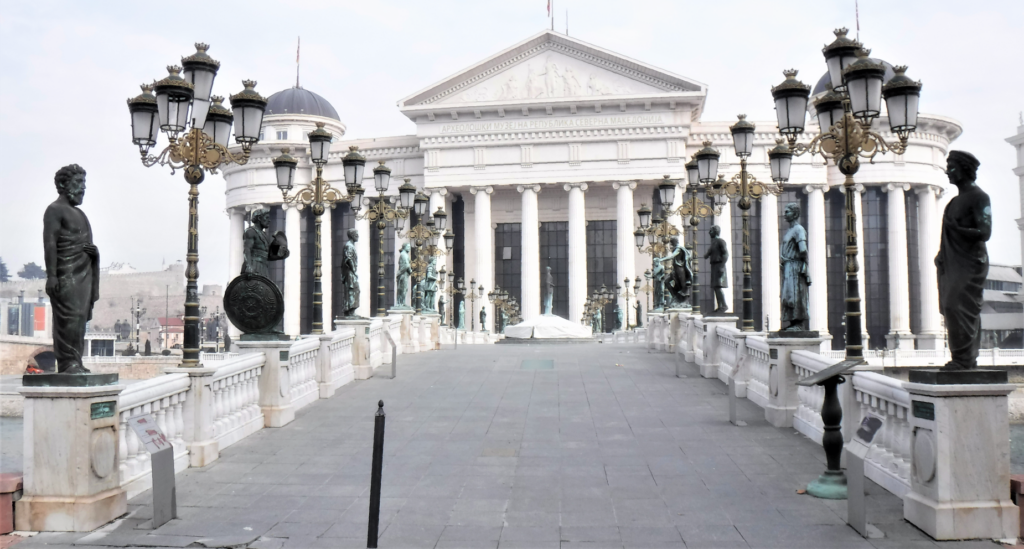
The Bridge of Art is situated about 150 metres downstream from the Bridge of Civilisations. The statues on this structure represent ‘distinguished educators, artists, writers, composers and actors who have had a deep influence of Macedonian art…’ Packing a startling 35 sculptures, It has a statue-to-bridge-length ratio that could well be unparalleled anywhere on earth.
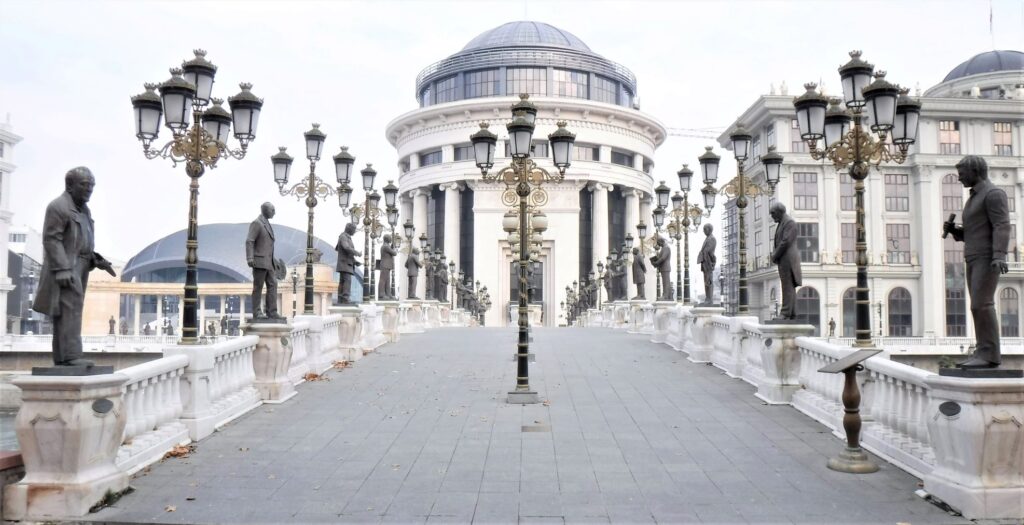
Skopje’s statue nuts did, however, baulk at installing sculptures on the city’s ancient Stone Bridge, the location of which has been a spot to cross the Varder since Roman Times. Mind you, they did sneak one onto the Bridge footings, which happens to be my favourite in all of Skopje.
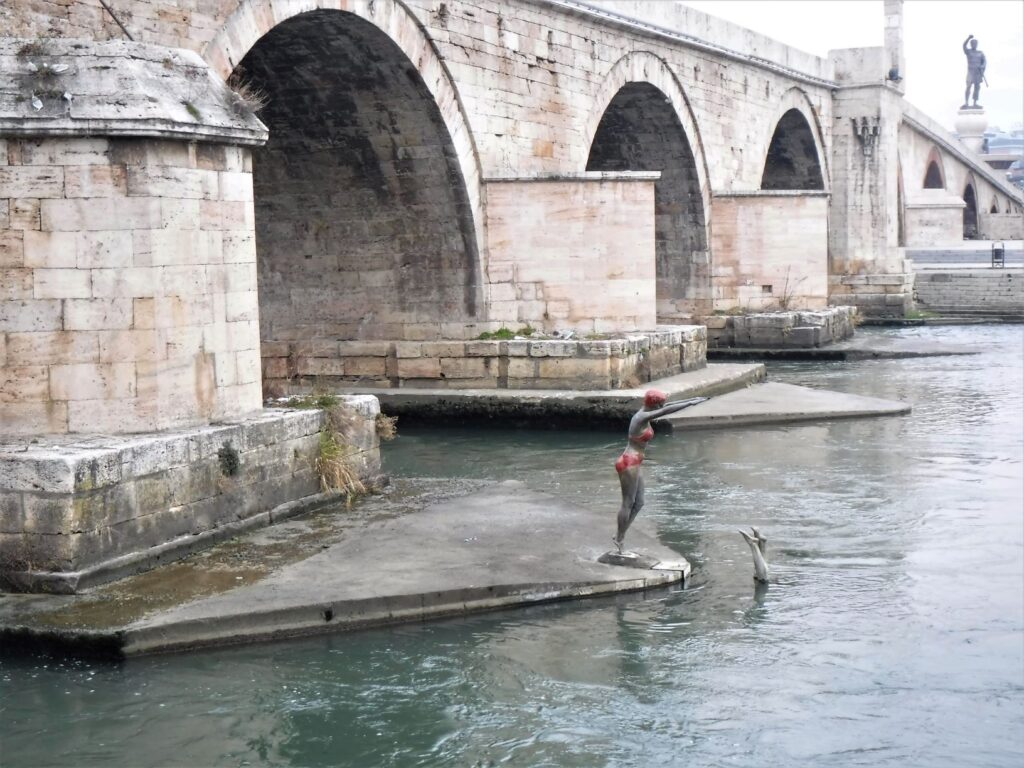
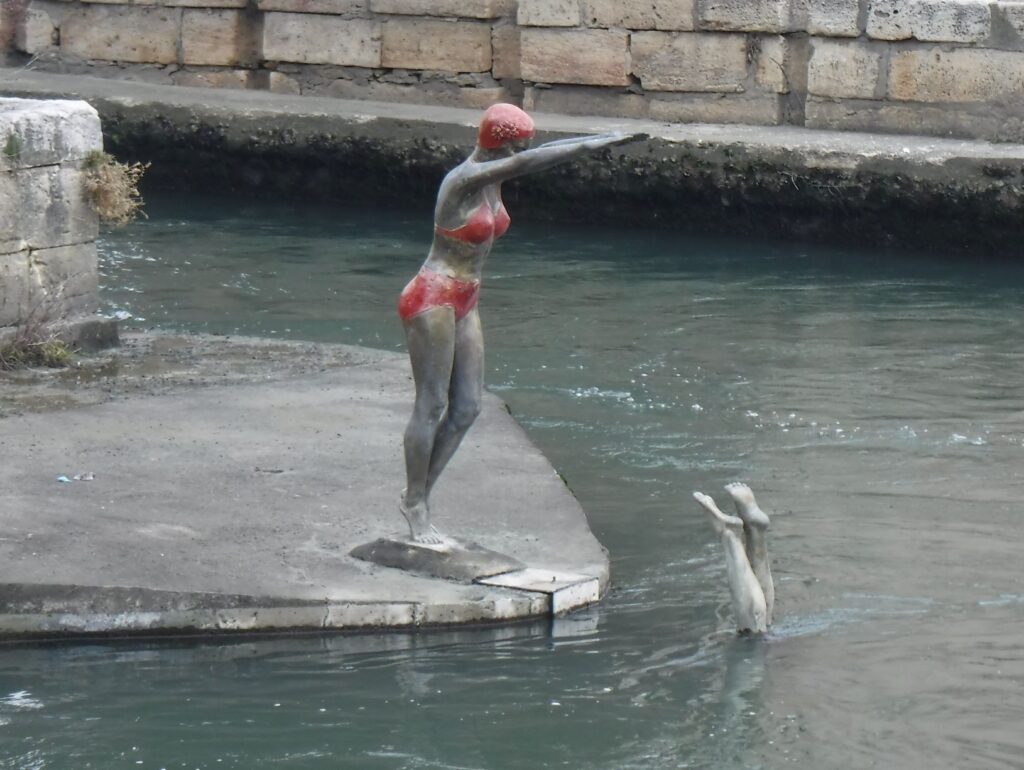
Remember kids, always check the water depth before you dive
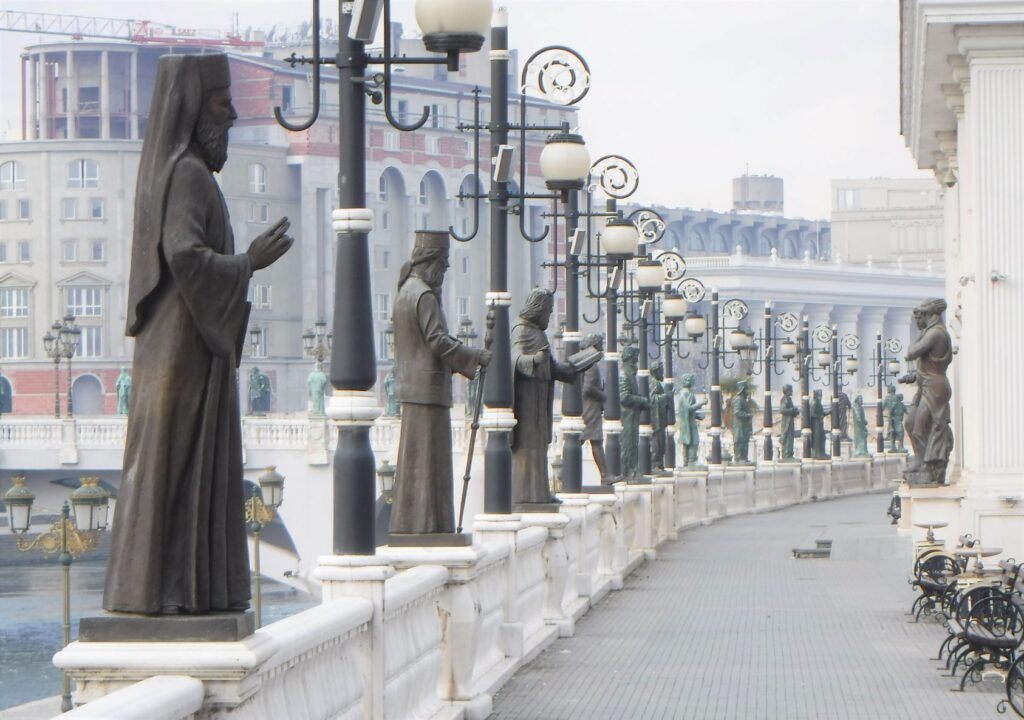
And it’s not just Skopje’s bridges that are laden with bronze. Here’s just a little sample from the north bank.
Skopje, where you never feel alone
Look I have to pull this post up now, as I could go on and on and on, much as Skopje’s statues do. I’ll leave you with a couple of shots of the Macedonian Foreign Ministry building. Being a building, and therefore a prime target for statues, and the Foreign Ministry at that, the Government decided to install 60 scuptures of former international statesmen from around the world. Seems fitting, doesn’t it? You can see them on the roof and lining the balconies.
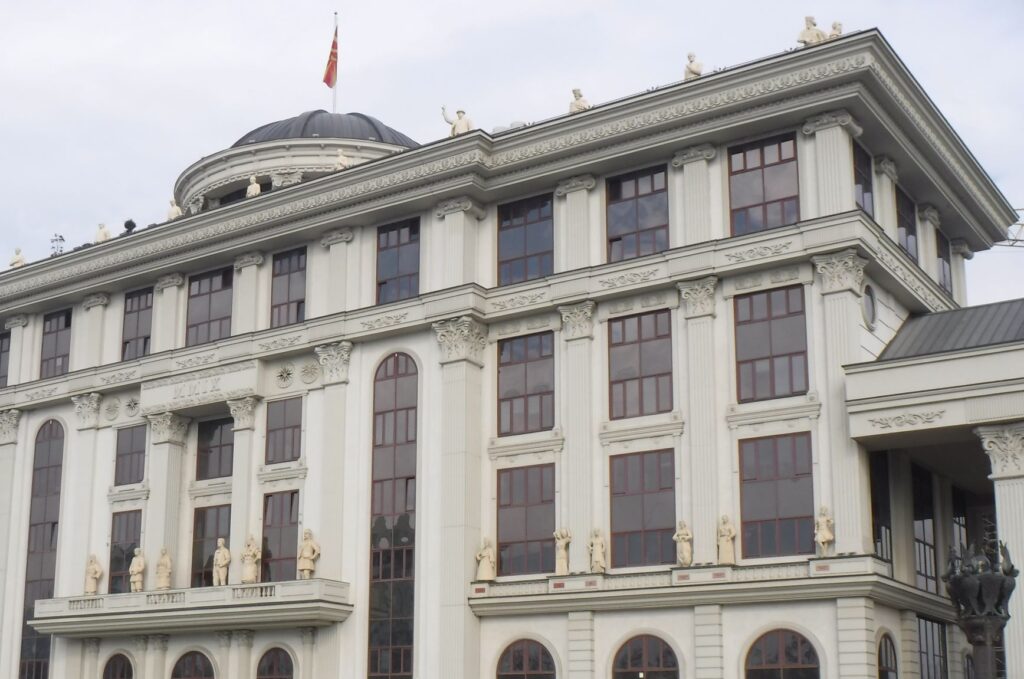
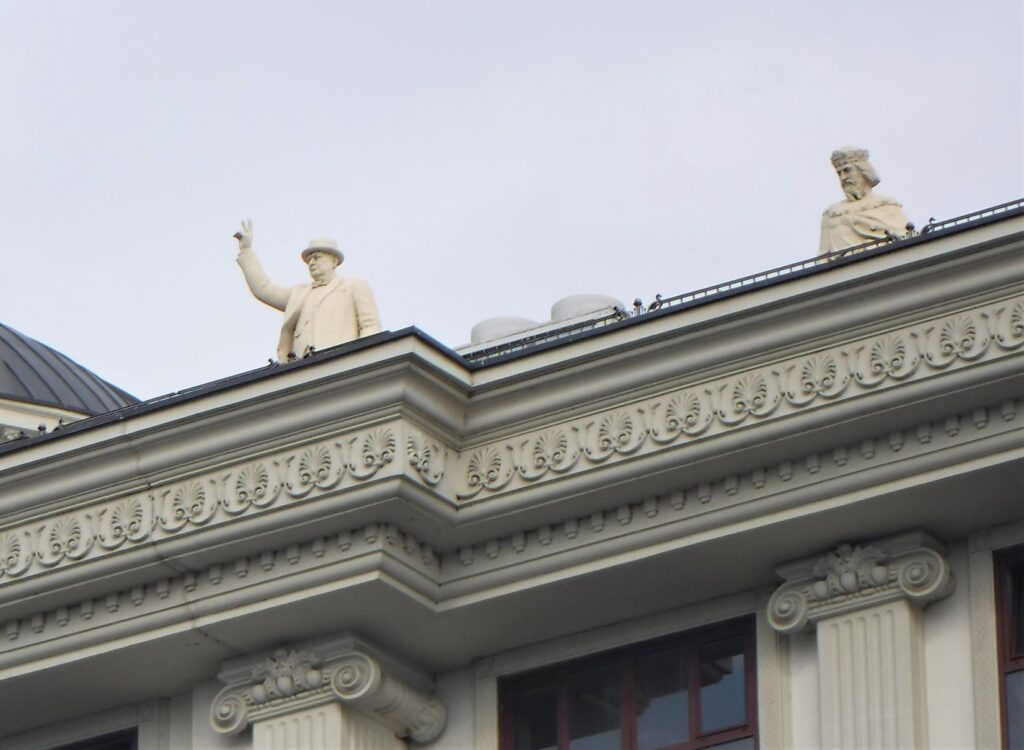
With the sheer mass of statues crammed into such a small area, it’s a little suprising that Skopje city centre hasn’t disappeared into a sinkhole. The city’s statues do give the place a certain character. Questionable perhaps, but character nonetheless.
*blue: Australian slang for a fight
Find more on the fight between Greece and Macedonia over naming rights here
Find more about the controversial Skopje 2014 project here
If you liked this post, you may also like Macedonain Cuisine, Vodici Ceremony
Leave a Reply